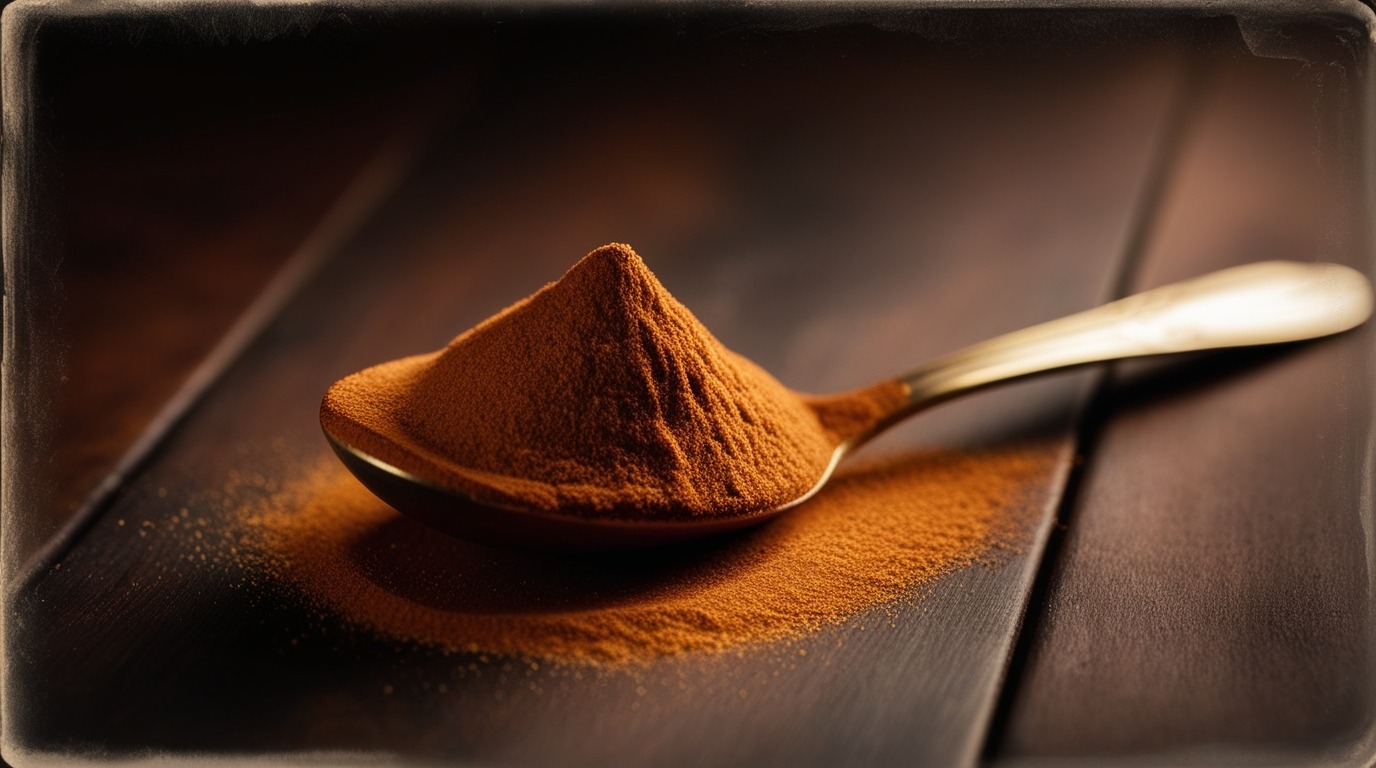FAST FACTS
- Testing by the Food and Drug Administration and Consumer Reports has set up elevated lead in further than a dozen ground cinnamon products.
- Lead may contaminate cinnamon intentionally or via contact to the environment.
- When copping cinnamon, experts say to calculate on estimable brands that have strong food safety practices.
The change from summer to fall has a certain something that makes us crave everything cinnamon, but new findings have alerted us to the possibility of an undesirable ingredient hiding in your favorite seasonal spice.
A Consumer Reports study published September 12 set up that 12 out of 36 ground cinnamon products tested contained high situations of lead, and before this time, the Food and Drug Administration issued health cautions after detecting elevated situations in several popular brands. [1] Both of these examinations were urged by the intimidating recall in October 2023 of polluted cinnamon apple 519 incidents of lead and chromium poisoning have been connected to puree and applesauce products.
While lead is a naturally occurring essence and largely necessary in our food force, it can pose serious health pitfalls when ingested, especially for children and pregnant women. There’s no given “ safe ” position of lead impurity, according to the Centers for Disease Control and Prevention. [2]
As similar, the recent news about heavy essence impurity in cinnamon may have you wondering how safe the spice really is and whether you’re better off skipping it altogether this season. That’s all there is to know about cinnamon’s situation.
To begin with, what findings did Consumer Reports and the FDA make?
In March and July, the FDA issued public cautions for brands of cinnamon that it said had unacceptably-high lead situations ranging from 2.03 to 3.4 corridor per million( ppm). The agency recommended the voluntary recall of ground cinnamon products from the brands Compania Indiilor Orientale, ALB Flavor, Shahzada, Spice Class, La Frontera, El Chilar, Marcum, SWAD, and Supreme Tradition.
The Consumer Reports research followed, which evaluated 36
cinnamon-containing items and spice blends.They flagged 12 for containing lead situations above 1 ppm, the threshold that triggers a recall in New York, the only state that regulates heavy essence in spices.
Consumer Reports set up that Paras had the loftiest lead attention, at 3.52 ppm. The 11 fresh brands, ranging from loftiest lead position to smallest, were EGN, Mimi’s Products, Bowl & Basket, Rani Brand, Zara Foods, Three Rivers, Yu Yee Brand, BaiLiFeng, Spicy King, Badia, and Deep.
Consumer Reports does n’t perform compliance testing, so it could n’t issue a recall grounded on these findings but notified the state of New York.
Laura Shumow, administrative director of the American SpiceTrade Association( ASTA), an assistance group representing more than 90 of U.S. Spice firms informed Health that Consumer Reports uses a lower lead level than the ASTA, FDA, and European Commission suggest. Under these guidelines, only three brands in the Consumer Reports testing — Paras, EGN, and Mimi’s Products — would fail to meet these situations. [3]
How Does Lead Get in Cinnamon?
Lead in cinnamon and other spices can go through two pathways: unintentional impurity and contamination.
Natural lead impurity can occur at colorful stages, including during growth, harvesting, and processing. As a naturally being heavy essence, lead can insinuate soil and water sources, polluting crops. This includes cinnamon, which comes from the dinghy and leaves of an evergreen cinnamon tree. [1]
Lead can also strain into cinnamon from sources similar as prime gasoline, mining regions, and construction spots, Bryan Quoc Le, PhD, a food scientist and food assiduity adviser , told Health. The lead can transude into the girding aqueducts, which “ will absorb lead into the tree and incorporate it into the dinghy, ” he said.
The outfit used in the grinding process might also contain lead, which can pollute the final product. Unintentional impurity frequently leads to trace quantities of lead in the spice.
The further concerning issue is contamination, in which lead is designedly added to the spice. “ Suppliers may add lead to cinnamon because it’s vended grounded on price per weight, ” Jerold Mande, an peripheral professor of nutrition at Harvard T.H. Chan School of Public Health, told Health. “ So if you put a cumulative in that increases the weight, like lead does, you’re going to make further plutocrats. ”
People may purposely add composites that look a lot like cinnamon, which may affect in truly high situations of lead, Kelly Magurany, elderly director of toxicology at NSF, told Health.It’s possible that imported goods are more likely to include these composites.
There is currently disagreement about whether the lead buildup in the cinnamon items that were tested was intentionally added or grew via exposure to the environment.
How Is Cinnamon Regulated?
The FDA regulates spices, including cinnamon, but there are no civil limits on lead or other heavy essence.
The agency can choose to cover spices for lead and issue cautions to the public grounded on its own or a state’s monitoring. Still, routine testing for heavy essence is n’t commonplace in the U.S., Magurany said.
Mande, a former elderly counsel to the FDA manager, blames a lack of backing.”The non-supervisory agencies in charge of guaranteeing the safety of our food are not sufficiently funded by Congress,” he stated.
The lack of oversight leaves it up to companies to take visionary measures, according to Magurany. “ Some companies test for heavy essence and note this on their website or product markers, ” Magurany said. Still, numerous spice brands simply buy their cinnamon from suppliers, repackage it, and put their markers on it.
still, they potentially may not realize that it contains high quantities of lead, ” Mande said, “ If the brands are n’t testing it.
Still, using social media to ask questions and demand translucency can be an effective strategy, Jackie Bowen, If you’re concerned about the brands you use constantly.
Is Cinnamon a safe-deposit box to Eat?
Experts say there’s no need to exclude cinnamon from your diet entirely. But if you’re upset about consuming ground cinnamon, a good place to start is to take stock of what’s formerly in your closet.
Still, tossing them might be the safest move, If you have any products flagged by Consumer Reports. The FDA also advises avoiding brands it has set up to have elevated lead situations, numerous of which are lower known and available at small grocery stores. Paras and EGN, the two companies with the loftiest lead situations, informed Consumers Reports that they’ve formerly asked stores to pull these products from the shelves.
Shumow however stated that ASTA thinks consumers should have faith in cinnamon from well-known American brands that respectable stores carry.
Magurany also recommended selecting such items.”Finish with respectable, well-known brands that have robust food safety procedures and are open about food safety and testing,” said the representative. She pointed out that there could be tighter safety regulations for organic products, particularly for those that have third-party certification.
Still, one option is to consider the products listed by Consumer Reports as the cinnamon brands with the smallest situations of lead 365 Whole Foods Market, Sadaf, If possible.
According to Quoc Le, whole cinnamon has a reduced potential for lead contamination than ground cinnamon since there is less exposure to lead-containing grinding equipment.(Contamination is also not a possibility.)
Mande concludes that heavy essence impurity is more of a concern for food safety in the US than it is for cinnamon alone. He’d like further alerts from manufacturers and nonsupervisory bodies to insure consumer safety.But for the time being, it’s critical to keep yourself knowledgeable about the things you eat, even the items in your spice cabinet.
3 Sources
- Consumer Reports.The 12 cinnamon maquillages you should no way use.
- Center for Disease Control and Prevention. About childhood lead poisoning forestallment.
- American Spice Trade Association. FAQs heavy essence in spices.

